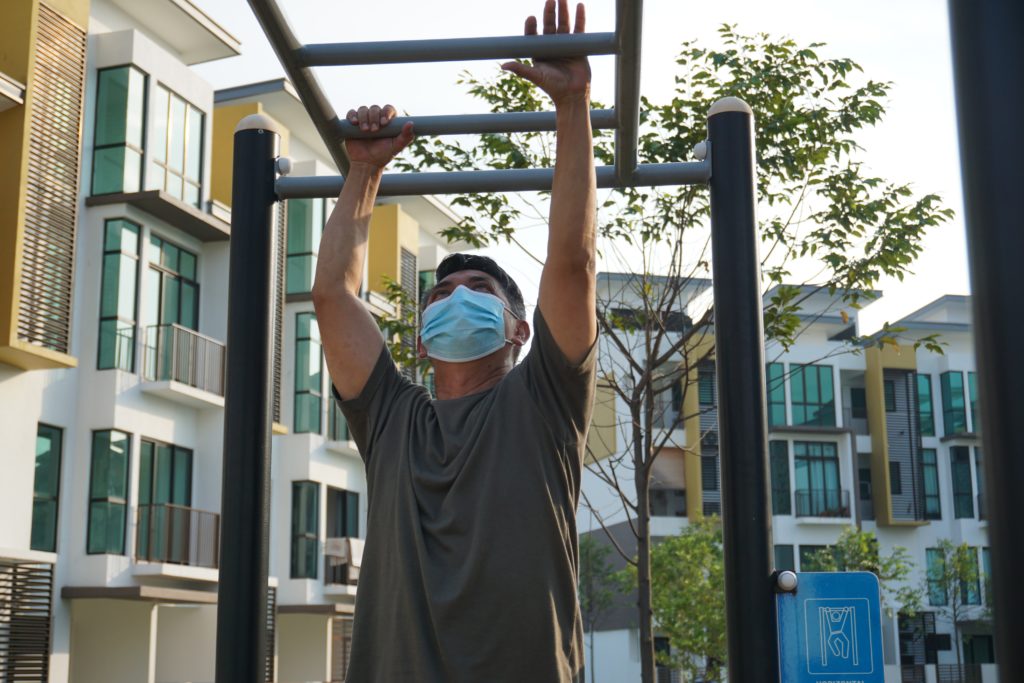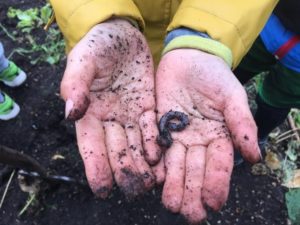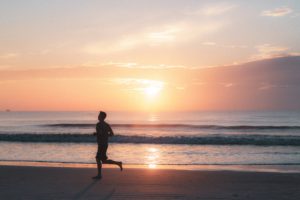About the Authors
Authors: Nilanga Aki Bandara (MKin and BSc), Balpreet Sasan and Nicholas Feng; Affiliation: The authors are with the University of British Columbia; Corresponding author: N.A Bandara (n.bandara@alumni.ubc.ca).
Socioeconomic Status and Unequal Access to Physical Activity
Regular physical activity (PA) has been shown to have numerous physical and psychological benefits (Folk et al. 2021, 3674). However, Stults-Kolehmainen & Sinha (2014) suggest that times of stress that impact one’s life, such as the current COVID-19 pandemic, lead to a decrease in PA (Stults-Kolehmainen and Sinha 2014, 81-121). This can be used to explain why there has been a consistent decrease in average PA across countries during the pandemic (Folk et al. 2021, 3674). While PA intensity has decreased, time spent sedentary has increased for people of all ages (Sasaki et al. 2021, 1477). However, on average, those with lower socioeconomic status (SES) had the greatest reductions in PA; while those with higher SES had increases in PA (Fearnbach et al. 2021, 1391-1399). Therefore, it can be said that the COVID-19 pandemic has disproportionately impacted the PA engagement of lower SES, or economically disadvantaged, community members.
Factors Influencing Physical Activity Levels During the Pandemic
Multiple factors have led to the decrease in PA experienced by lower SES community members during the COVID-19 pandemic. First, many individuals, including those of lower SES, may have reduced and/or limited access to exercise spaces/facilities during times of lockdown and social isolation, enacted to prevent the spread of COVID-19 (Folk et al. 2021, 3674; Girgin and Okudan, 2021, 322-327). Second, individuals with low SES may lack the space or financial resources required for home-based exercise equipment (Bandara et al. 2021). Furthermore, economically disadvantaged community members may lack adequate physical literacy or knowledge of current PA guidelines, hindering PA participation (Bandara et al. 2021) Understanding these barriers influencing PA in the current situation is crucial for promotion and developing appropriate public health interventions (Sasaki et al. 2021, 1477).
Barriers to Physical Activity Pre-Pandemic
It is important to recognize that although the COVID-19 pandemic exacerbated inequality in PA between higher SES and lower SES community members, the disparities had already existed (Folk et al. 2021, 3674; Sher and Wu 2021; Grzywacz and Marks 2001, 202-220). Examining studies regarding SES and PA published before 2020, one can find multiple barriers to PA before the pandemic. Many of these barriers remained unchanged and were cited as barriers during the pandemic as well. These barriers included availability and expenses associated with exercise facilities, limited physical literacy and knowledge of current PA guidelines and lack of leisure time (Gray et al. 2016, 419-429; Sequeira et al. 2011, 18-19). However, there were also certain barriers to PA that were cited more frequently pre-pandemic, such as perceived lack of safety in the neighborhood. Therefore, community members of lower SES have faced challenges regarding PA participation both before and during the pandemic, and it can be inferred that these will continue into the post-pandemic era as well. Due to lower PA participation, lower SES community members are at increased risk to be affected by both physical and psychological health problems (Shur et al. 2020; Bezerra et al. 2020, 2411-2421). This highlights the importance of reopening PA spaces to create more inclusion for low SES community members.
Variability within Physical Activity Interventions
Examining previous interventions (interventions can be defined as the practice or policy of providing access to opportunities and/or resources for individuals who may be excluded or marginalized) for low SES community members, many differ in their methods of approach and impacts, with each having its own advantages and disadvantages. As such interventions range in the methods, results, and conclusions of their hypotheses, the implications for further research are necessary to consider to progress various methods of promoting inclusion among low SES community members. While some strategies suggest initial inclusion through different age populations and interventions such as volunteering (Zanbar 2019, 164-174), sharing of knowledge, scientific studies, specialized structures/resources, further examination and review are influential in future impacts and interventions. In the next sections, we review some of the interventions.
Physical Activity Interventions
Childhood and Physical Activity
Through examination of previous PA interventions to improve inclusion among low SES community members, the relationship between childhood socioeconomic position and adult leisure-time PA found evidence of an association between a less advantaged childhood and less frequent PA in adult development (Elhakeem et al. 2015, 92). As with organized sport among youth, a substantial contribution to daily energy expenditure, (Dollman and Lewis 2009, 318-322) investigates the predictors among various socioeconomic positions among children and warns against community complacency. While community support, such as providing PA equipment, funding organized sports, and volunteer activities for youth, are advantages, the disadvantages are the constructs that children may perceive with their peers: “is it worth it?” (perceived outcomes); “am I able?” (perceived competency); “reinforcing” (parental support); and “enabling” (perceived barriers). As youth organized PA improves the inclusion among low socioeconomic community members, it is important to cultivate children’s success in these areas as the social and physical environments with other children of similar or higher socioeconomic status may create barriers in communication and acceptance among peers.
Technology-Based Physical Activity
With technological improvements, internet-supported PA in low socioeconomic status communities can be conducted as the cornerstone of comprehensive school PA promotion programs. Lonsdale et al. (2019) investigated the efficacy of teacher professional learning intervention, delivered partially via the internet, the intention is to maximize opportunities for students to be active during physical education lessons and enhance motivation towards these activities (341). With the intervention being acceptable by teachers, feasible to deliver, and effectively increased adolescents’ motivation during lessons, it offered the opportunity to support the delivery of professional programs through technology that improved inclusion and PA levels. However, although these interventions raise motivation during the sampled population PA lessons, no further research was conducted on interventions for adults or follow-up if the participants continued to partake in PA without the inclusion of the implemented technology. Thus, a possible disadvantage would be the necessity of a technology-based PA program that continues to intervene in youth physical education classes.
Findings from Interventions
By providing subsidies to access PA spaces, we are actively reducing the environmental barrier of the cost associated with PA. Steenhuis et al. (2009) suggest providing a free initial month of gym membership and then a continuously subsidized membership beyond the first month (716-721). Depending on the financial health of the fitness organization, other possibilities can include having completely free fitness access or a one-time low payment option for the year, such as a low $1 annual fitness pass. If an organization can not afford to provide all community members with a low-cost membership plan, then the organization may consider having a variety of membership plans, so that access to the facility is maximized.
The findings of Moore et al. (2008) suggest that low SES communities are 4.5 times more likely not to have adequate recreational spaces compared to higher SES communities (16-22). This speaks to the inequitable distribution of recreational facilities in these communities. It is likely that many low SES communities have very limited recreation options and this can act as an environmental barrier that limits participation in PA. Moving forward, it is necessary to take a collaborative approach to work with diverse community members in low SES communities to create safe and inclusive PA spaces. This can involve giving community members ownership and leadership opportunities in projects aiming to increase the availability of PA spaces. For example, important discussion areas are the physical location and design of recreation spaces, so that it is available for all.
Through examination of interventions to improve inclusion for low SES community member’s PA, it was discovered that many methods are being used by researchers, communities, and individuals who challenge this topic are providing many solutions. As future research is conducted, the importance of examining the advantages and disadvantages of these interventions allows a better understanding of the situation and supports the inclusion of low SES community members.
Physical Literacy
Lastly, increasing PA literacy is important as low SES community members may not have had the same opportunities to develop knowledge on PA. Having a lack of knowledge can act as a barrier that prevents low SES community members from engaging in PA, as they may feel overwhelmed when contemplating what training might entail. Tailored intervention programs that meet the needs of these communities should be considered, examples include meditation programs with a focus on self-reflection (Bandara et al. 2021). Further, leveraging support networks in the form of volunteer telephone services can also help increase PA literacy, as community members have people they can reach out to for support. Fitness facilities may also consider having introductory fitness sessions and necessary health evaluation, so that community members can orient themselves to exercise in a safe manner.
Conclusion
This paper has highlighted the pandemic’s devastating impact on low SES community members. As we move forward, it is necessary to consider ways of improving inclusion in PA, so that all members of our society have equitable access to PA spaces. Some strategies that can be considered include providing recreation subsidies, increasing accessibility of PA spaces and providing support to increase PA literacy.
References
Bandara, N. A., Balpreet Sasan, Nathan Li, Nicholas Feng, and Randy Xuanu Zhou, “Supporting Community Members With low Socioeconomic Status Engage in Physical Activity” Medicine & Science in Sports & Exercise (forthcoming).





